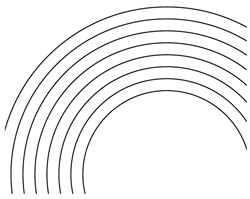![]()
THE RAINDROPS THAT keep falling on your head began life in the world’s seas and oceans, journey up into the sky in the form of water vapour, then condense back into water again and fall back to Earth. It’s a long round trip and it takes a molecule of water vapour about a week to complete this cycle, during which time it may have been blown many thousands of miles. So when you next experience a downpour or a bit of drizzle, spare a thought for how far those drops have travelled to water your garden or bounce off the top of your umbrella.
‘Anyone who says sunshine brings happiness has never danced in the rain.’
Anonymous
Have a look at your fingertip. Now imagine 100–200 droplets of water crowding that space – that’s the density you’ll find in a developing raincloud. These droplets are infinitesimal in size, narrower than a human hair, and therefore aren’t big or heavy enough to fall as rain. If they are to do that, what they need is strength in numbers. As these tiny droplets drift down through the cloud, they bump into each other and merge into larger, heavier droplets. With added size, weight and momentum, they fall faster and coalesce into even bigger drops until – bingo – they become a shower of rain.
As well as water droplets, clouds may contain ice crystals. Both droplets and crystals need a nucleus to form around. Water can condense around a range of different particles including atmospheric salt and soot, but ice has more limited options: it can only form on a few types of nuclei, such as dust, with the result that there are fewer crystals than droplets in a cloud. But ice crystals make up for this by growing faster than droplets, and soon become snowflakes. If, as these snowflakes fall, they pass through warmer air, they melt and turn into rain.
Raindrops are actually bun-shaped ovals that fall flat-side down – it’s the visual trail caused by the speed of their falling that tricks our eyes into seeing them as teardrop-shaped.
It has been calculated that if the total amount of rainfall that the whole world gets in a year were averaged out across the surface of the planet, each area would get a dose of around 800 millimetres (31.5 inches) of rain annually.
DO IT YOURSELF!
Provided it hasn’t rained during the night you can have a go at predicting rainfall by taking a look at grass first thing in the morning. If the grass is dewy, it is unlikely that you’ll be needing your umbrella, but if it’s dry this suggests either it’s going to be a bit breezy or that you’ll need to throw on your rain macintosh.
One thing guaranteed to raise a smile when the rain starts to pour on a sunny day is the appearance of one of the weather’s most beautiful visual effects – a rainbow. Some of the sun’s light is refracted into its component colours in the drops of rain, producing the effect of a multi-coloured arc. The stunning phenomenon has many myths and religious stories attached to it – including the rainbow as a symbol signifying the end of the Flood in the biblical tale of Noah’s Ark, and the legend of the crock of gold sitting at its end.

RAIN, RAIN GO AWAY
After attending church one Sunday, American author Mark Twain (1835–1910) and fellow writer William Dean Howells (1837–1920) were caught in a heavy downpour. Howells looked up at the glowering sky: ‘Do you think it will stop?’ he asked. ‘It always has,’ answered Twain.
Drizzle is a kind of precipitation produced by shallow, low-lying clouds that don’t have the substance or height necessary to generate a good shower. They may be less than 300 metres (1,000 feet) thick, and the misty drops they release are much smaller than full-sized raindrops.
Freezing rain occurs when snow falls through a layer of warm air and melts, then falls through a colder layer but does not freeze again because it has no nuclei to freeze onto – until it hits the ground, that is, creating a thin and treacherous layer of slippery ice that can be a real hazard to drivers.
Virga is the name for those strange, streaky curtains of rain that you sometimes see suspended in mid-air below a cloud. What’s happening here is that dry air between the cloud and the ground has caused the rain to evaporate before it hits the Earth.
WATCH YOUR LANGUAGE!
Supercooled water Extremely cold water that has not frozen even though the surrounding temperature is below freezing point. Water can remain in a liquid state in temperatures as low as -40°C (-40°F).
• The famous song ‘April in Paris’, written by the Russian-American composer Vernon Duke (1903–69), extols the charms of this romantic city in spring. Inspired by its lyrics, a friend of his visited Paris in April but had a horrible time – it poured with rain. On returning home, the friend complained to the composer. ‘Why did you go to Paris in April?’ Duke asked, ‘The weather’s always terrible then.’ ‘I went because of your song!’ the friend cried. ‘Ah,’ said Duke, ‘well I really meant May, but I needed two syllables.’
• London is known for its rain, but the winter of 1961 was especially bad, being the wettest on record at that time. ‘The tanned appearance of many Londoners is not sunburn,’ declared the London Evening Standard, ‘it is rust.’